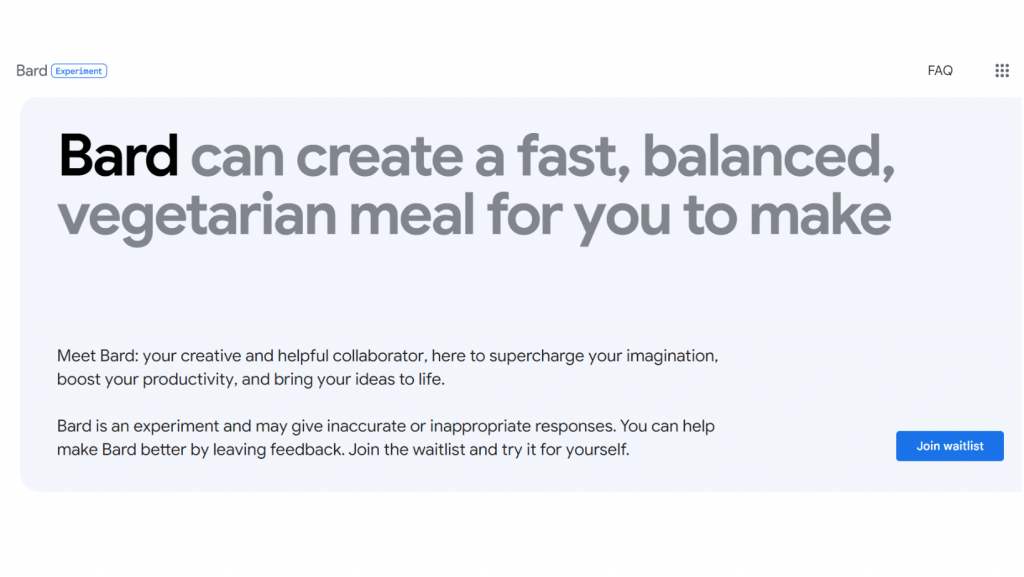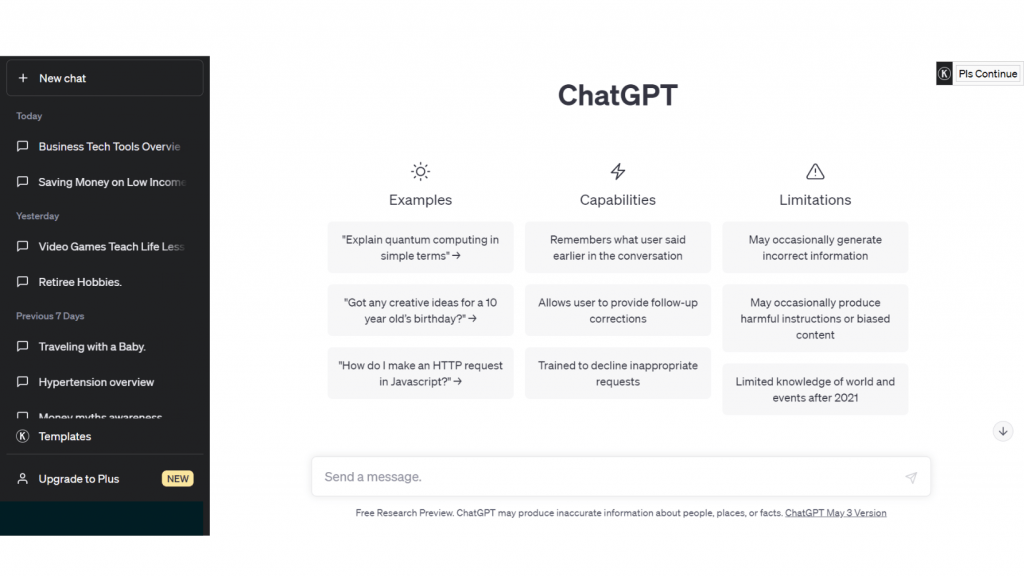Google is constantly advancing its artificial intelligence (AI) capabilities, and its recent development, Google Bard, the company’s chat service, has generated quite a buzz. This article aims to provide details and things you need to know about Google Bard, a new AI-powered chatbot service that is currently in development.
What is Google Bard?
Google Bard was first announced at the Google I/O developer conference in May 2021, along with several other AI-powered services. The chat AI is currently in development and is not yet available for public use, although Google has opened up a waitlist for users who are interested in trying it out.
According to Google, the development of Google Chat Bot AI was inspired by the company’s ongoing efforts to improve its search capabilities. The chatbot is designed to provide users with more accurate and relevant information, the latest advancements in natural language processing (NLP), and machine learning (ML) to generate human-like text responses to user inputs and understand the context of a conversation.

One of the main features of Google Bard is its use of LaMDA, which stands for Language Model for Dialogue Applications. LaMDA is an NLP model that enables the chatbot to comprehend the conversation’s context and deliver precise and appropriate answers. LaMDA is a significant difference from traditional NLP models, which are often limited in their ability to understand the context of a conversation.
With LaMDA, Google Bard can understand not just what the user is asking, but also why they are asking it and what other information they might need. The Google Chat Bot AI’s integration with other Google services, such as Search and Knowledge Graph, also makes it a formidable competitor in the field of conversational AI.
Google Bard Features
Google Bard’s ability to generate human-like text responses and understand the context of a conversation is one of its key features. This is made possible by its use of LaMDA, which allows it to have more engaging and fluid conversations with users. LaMDA enables the Google AI Chat Bot to respond to open-ended questions in a more natural and nuanced way, making the conversation feel more like a human-to-human interaction.
Another noteworthy feature of Google Bard is its effortless integration with other Google services. By utilizing these resources, the chatbot AI can offer more precise and valuable answers to user inquiries. For instance, if a user asks Bard for the weather, the chatbot can provide a detailed and up-to-date forecast by pulling information from Google’s Weather API. This integration with other Google services gives Bard a competitive edge over other chatbots in the market.
How does Google Bard work?
Google Bard works by using AI and NLP to analyze the text inputted by the user and generate a response that is both relevant and accurate. The chatbot employs the Transformer architecture, a neural network type commonly utilized in NLP.
The Transformer architecture allows Google Bard to process the input text and generate a response more efficiently and accurately than traditional NLP models. Furthermore, the chatbot’s training includes a substantial corpus of text, enabling it to produce varied and superior-quality responses.
Google Bard also integrates LaMDA, a conversational AI model that equips the chatbot with the ability to grasp the conversation’s context and deliver precise and fitting responses. This attribute proves especially advantageous when handling intricate subjects or dialogues involving several themes.
Google Bard Potential Applications
Google Bard has several potential applications, both in the consumer and enterprise spaces. Here are a few examples:
- Customer service – One potential application for chatbot AI is enhancing customer service by furnishing customers with precise and pertinent information. For instance, a business could implement Google Bard to address frequently asked questions or offer troubleshooting aid.
- Content creation – An efficient AI content marketing tool for websites, blogs, or social media platforms. For example, a news organization could use Google Bard to generate news articles or summaries of news stories.
- Dialogue systems – The AI chatbot could be used to develop more advanced dialogue systems, such as chatbots or virtual assistants. For example, a company could use Google Bard to develop a chatbot that can handle complex customer inquiries.
- Natural language understanding – Google Bard’s use of LaMDA could also have applications in natural language understanding. For instance, the chatbot could scrutinize customer feedback or reviews, providing feedback on customer sentiment.
Google Bard Compared to Other Chat AI
While Google Bard is not the only AI-powered chatbot service on the market, its advanced use of LaMDA and integration with other Google services make it a formidable competitor. Other companies, including Amazon and Microsoft, have developed their chatbots with comparable functionalities. However, Bard’s use of LaMDA allows it to respond to open-ended questions in a more natural and nuanced way, making the conversation feel more like a human-to-human interaction.

In addition, Bard’s integration with other Google services makes it more accurate and helpful than other chatbots. By tapping into these resources, Bard can provide more relevant and up-to-date information to users. Moreover, Google’s expertise in NLP and ML gives Bard a unique advantage over its competitors like ChatGPT.
Google Bard’s Availability
Google Bard is currently in development, and as of May 2023, it is not yet available for public use. Nevertheless, individuals who are interested can sign up on a waitlist to receive a notification when it becomes available.
The waitlist provides an opportunity for users to be among the first to test out the chatbot and provide feedback on its performance. As Bard continues to be developed and refined, more users will likely be added to the waitlist in the future.
The Google Chat AI – Google Bard
To conclude, Google Bard is a stimulating advancement in the sphere of AI and NLP. Its potential to create human-like textual responses and comprehend the conversation’s context has the power to revolutionize our interactions with technology. While Google Bard is not yet available for public use, its development is certainly something to keep an eye on in the coming years.
